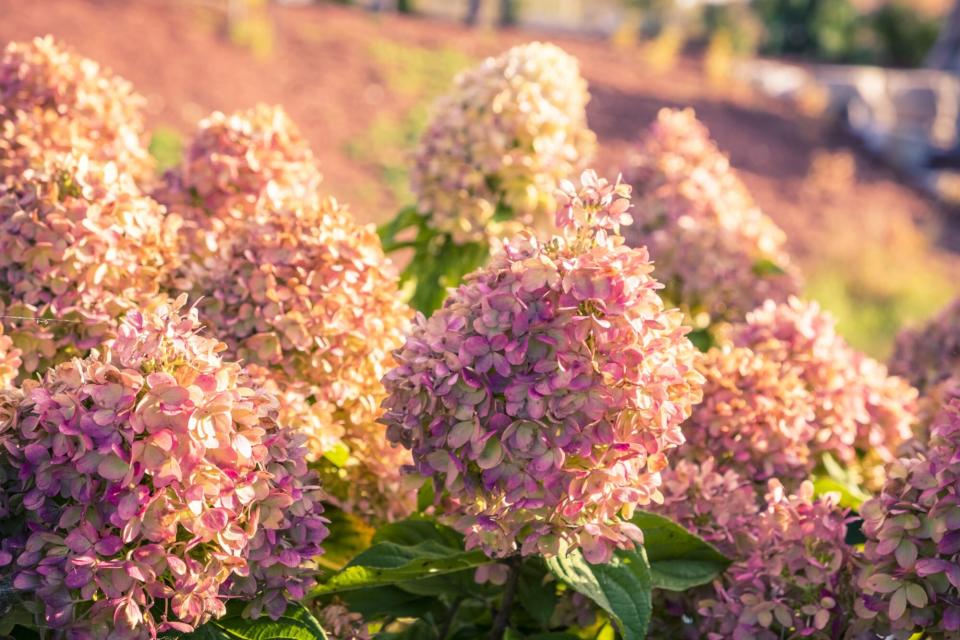These Signs Indicate That Your Hydrangeas Are Done Blooming for the Summer
Your hydrangeas' season-long bloom time often depends upon which varieties you have planted in your yard, says Stacey Hirvela, a horticulturist with Proven Winners ColorChoice Shrubs. Some, like panicle and smooth hydrangeas, remain beautiful long after the flowers fade. The former, for example, will transform from white or green to various shades of red and pink, putting on a right up until the first frost of autumn.
Smooth hydrangeas, on the other hand, can transform from white or pink to a vibrant green, enduring after the temperature drops. "In both cases, these flowers can contribute significant winter interest if they are left on the plant, so I don't consider their blooming done for the season at all," she explains. "Certain oakleaf hydrangeas, like Gatsby Pink and 'Ruby Slippers,' also transform to an attractive pink that extends their season of interest by several months." Though these shrubs morph at the end of summer, they do, at one point or another, stop producing new blooms or become faded and dull; ahead, several signs that indicate that your favorite plant is finished for the season.
Related: What to Do If Your Hydrangeas Aren't Blooming

diane555 / Getty Images
Watch out for these end-of-season indicators.
According to Hirvela, your hydrangea is done blooming when the color of the flowers has faded in a non-appealing way. "There are a few varieties that will continue to push out new buds through late summer and autumn," she says. "But, if you feel the older blooms are detracting from the plant's aesthetics, you can consider them done."
You can extend the blooming timeline of select varieties.
Select varieties are capable of producing additional flowers after their main bloom. "The best way to maximize this ability is to keep your plant free of stress: They need the right amount of water and should avoid intense sun," explains Hirvela. "This keeps the plant growing vigorously—and that's the key to getting additional flowers."
Avoid over-fertilizing your hydrangeas.
While Hirvela says it may sound tempting to apply fertilizer in an attempt to boost the flower count, especially when buds start to slow down, you shouldn't feed hydrangeas (or any perennials or shrubs, for that matter) after late July, as this can increase the potential for damage during the winter season.
Deadheading won't work at the end of the summer.
Although it's common practice to "deadhead," or remove dead flowers, in order to encourage new growth, this method won't work on hydrangeas at the end of the season. "It's perfectly okay to remove the spent blooms if you wish, but deadheading hydrangeas does not generally do much to encourage re-bloom in the way that people see in annuals and perennials," notes Hirvela. "There's no real plant performance advantage to doing so—it's just an aesthetic choice."

